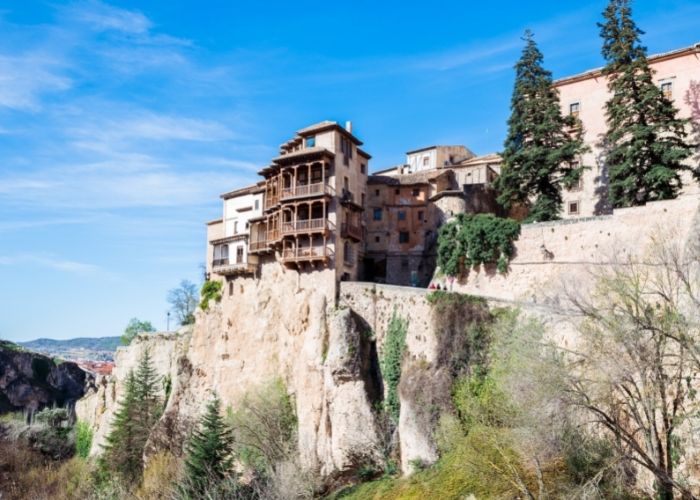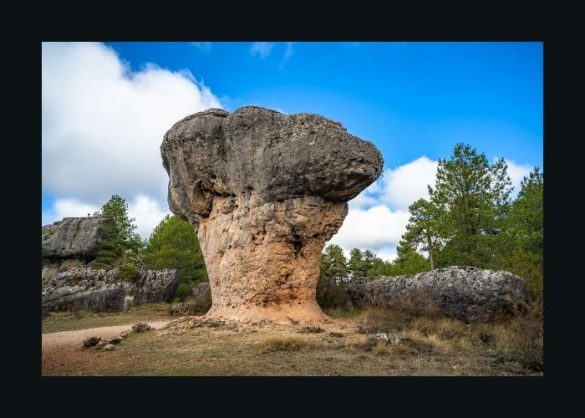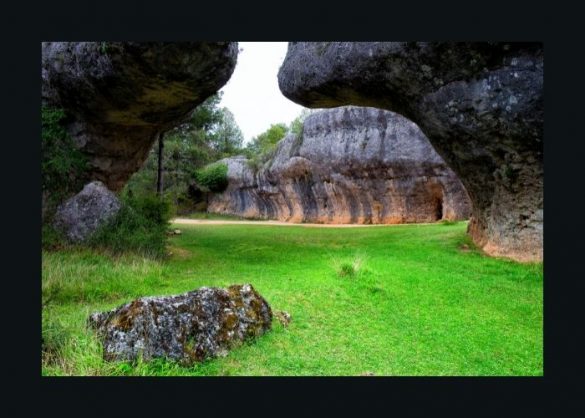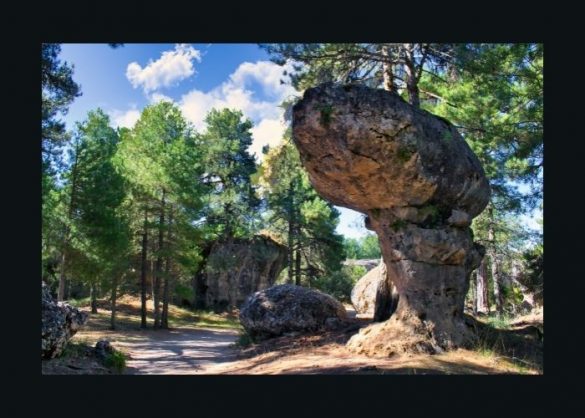CASTILLA-LA MANCHA – Cuenca is a UNESCO World Heritage city set in the mountains of east-central Spain and famed for its hanging houses. Founded by Moors, it still has its Historic Walled Town with steep cobbled streets and medieval castle ruins.
 Home to many historic churches, and located high above the Júcar and Huécar rivers, Cuenca is famous for its “Casas Colgadas,” or hanging houses. To see them cling to the edges of the cliffs is just breathtaking.
Home to many historic churches, and located high above the Júcar and Huécar rivers, Cuenca is famous for its “Casas Colgadas,” or hanging houses. To see them cling to the edges of the cliffs is just breathtaking.
What´s more, Cuenca is only around 2 hours drive, or an hour away on the train from Madrid.
Breathtaking and magical
Everything about Cuenca is magical. You can visit a Parador which was formerly an old monastery. This is at the top of the Huécar gorge facing onto the famous hanging houses.
The San Pablo footbridge offers the most amazing views of the hanging houses and the gorge 60 metres below. It connects the Casas Colgadas with the Parador and the old town where all the historical buildings can be found.
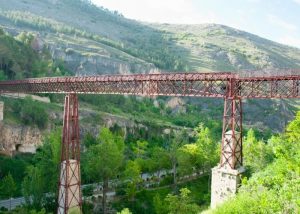 Museums and parks
Museums and parks
The Spanish Abstract Art Museum is one of the largest collections of modern art in Spain. It includes over 700 works of art by renowned Spanish artists.
The Paleontolocial Museum of Cuenca (Museo Paleontológico de Cuenca) has an extensive collection of more than 34,000 fossils and items excavated from the Castilla-La Mancha region and dating back to over 500 million years ago.
This museum is also a favourite of the children as there are some amazing dinosaur exhibits. Outside the museum, you can also find the Palaeontological Park (Parque Paleontológico) which features large dinosaur replicas.
Children will also enjoy the Science Museum which takes visitors on a journey of discovery to uncover the mysteries of the universe. Youngsters can also learn about the “big bang” theory, climate change, clean energy, and all sorts of other interesting science subjects.
Cathedrals and churches
The Cuenca Cathedral is a Gothic-style building and is one of the earliest examples of Gothic architecture in Spain.
In the main square, you can find the 12th-century Cathedral Santa Maria la Mayor. This is a mix of architectural styles between Norman and Gothic. Right next to this Cathedral is the Bishop´s Palace (Palacio Episcopal). On the lower floors, there is an amazing art collection, including the “Christ on the Cross” and “Prayer in the Garden of Olives” by El Greco.
The San Antón Church (Iglesia de la Virgen de la Luz) is dedicated to the Virgin Mary, the city’s patron saint. It dates to the 16th century but was not completed until the 18th century. Within the church is a Black Madonna, which is typically found in medieval pilgrimage churches.
Special gems
One of Cuenca’s “hidden” gems can be found underground. The Túneles de Alfonso VIII is a series of natural tunnels that were expanded over the centuries. During the Spanish Civil War, they were used as shelters and to serve as pedestrian passageways beneath the town.
This is the perfect place for a weekend and is great for all ages. So, if you have time, just over 30 kilometres from Cuenca you can visit La Ciudad Encantada (The Enchanted City) geological site. This is a scenic drive with beautiful town and valley views along the way. Furthermore, the Enchanted City is a labyrinth of crags, caves, and waterfalls. And, due to the erosive weather forces and the waters of the Júcar River, the rocks are formed into unusual and unforgettable shapes.
Related post: Street collapses near hanging houses
